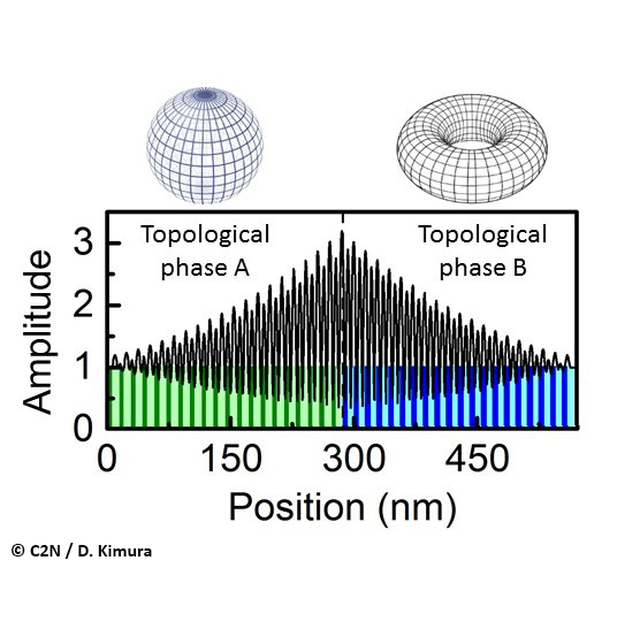Nanometric semiconductor structures have been used to confine ultrahigh frequency sound by exploiting their topological properties.
The 2016 Nobel Prize in Physics was awarded to the field of topological matter. A key result was the demonstration that topology can be used to predict the behavior of solids. An example is the trapping of electrons at the interface between two topologically different crystalline insulators. Recently, similar phenomena have been observed in optics and macroscopic acoustics.
Researchers from the Centre de Nanosciences et de Nanotechnologies/Centre for Nanoscience and Nanotechnology – C2N (CNRS/Université Paris-Sud) and the laboratory Matériaux et Phénomènes Quantiques – MPQ (CNRS/Université Paris Diderot) present a completely new platform to study confinement properties predicted by topology at the nanoscale. Their work is published in the journal Physical Review B.
For the first time, the researchers experimentally demonstrated the topological trapping of sound at the nanoscale. Acoustic phonons with frequencies around 350 GHz are trapped in semiconductor multilayer stacks of a few nanometers thickness. The structures are formed by concatenated phononic crystals with different topological phases, i.e. their acoustic bands are inverted. They show by Raman scattering experiments that acoustic phonons are topologically confined at their interface.
The reported robust topological interface states could become a key element in engineering nanophononic resonators for sensors and phonon lasers. Other potential applications are resonators in optomechanics, in nanoscale thermal transport and for the control of decoherence in solid state systems.
Figure : Spatial displacement pattern |u(z)| of the topological interface phonon at 350GHz (black) together with a sketch of the semiconductor multilayer structure. The mode envelope shows a maximum at the interface between the two topologically different structures and decays evanescently into both directions away from the interface. Green and blue color schemes denote spatial regions with different topological phase. © C2N / D. KimuraReference:
Topological nanophononic states by band inversion,
M. Esmann, F. R. Lamberti, P. Senellart, I. Favero, O. Krebs, L. Lanco, C. Gomez Carbonell, A. Lemaître, and N. D. Lanzillotti-Kimura, Physical Review B (2018)
DOI: doi.org/10.1103/PhysRevB.97.155422
- Centre de Nanosciences et de Nanotechnologies – C2N (CNRS/Université Paris-Sud)
- Matériaux et Phénomènes Quantiques – MPQ (CNRS/Université Paris Diderot)
Contact:
- Martin Esmann, Post-Doctorant au C2N
- Daniel Lanzillotti Kimura, Chercheur CNRS au C2N









